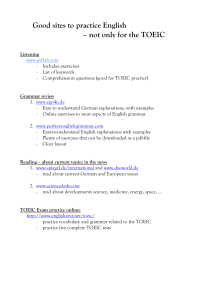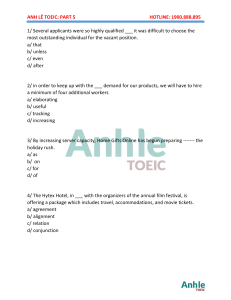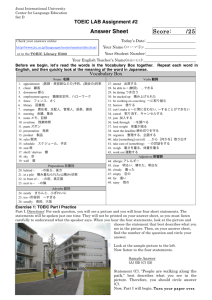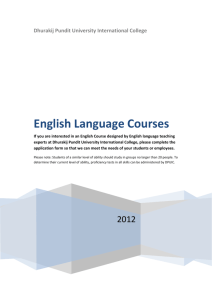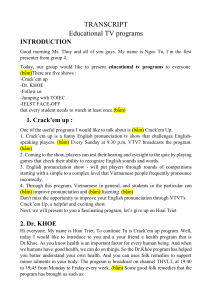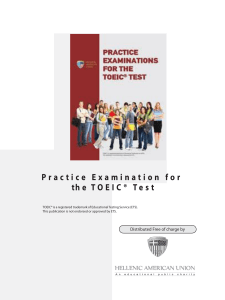TOEIC Listening & Reading Test: Research & Validity
advertisement
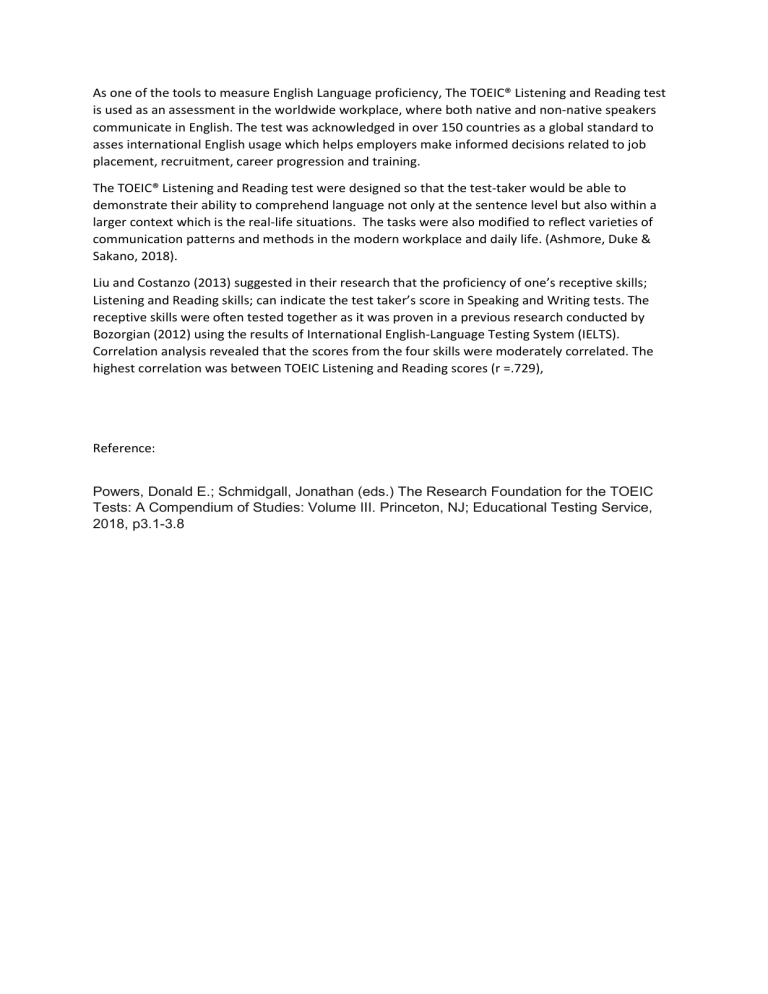
As one of the tools to measure English Language proficiency, The TOEIC® Listening and Reading test is used as an assessment in the worldwide workplace, where both native and non-native speakers communicate in English. The test was acknowledged in over 150 countries as a global standard to asses international English usage which helps employers make informed decisions related to job placement, recruitment, career progression and training. The TOEIC® Listening and Reading test were designed so that the test-taker would be able to demonstrate their ability to comprehend language not only at the sentence level but also within a larger context which is the real-life situations. The tasks were also modified to reflect varieties of communication patterns and methods in the modern workplace and daily life. (Ashmore, Duke & Sakano, 2018). Liu and Costanzo (2013) suggested in their research that the proficiency of one’s receptive skills; Listening and Reading skills; can indicate the test taker’s score in Speaking and Writing tests. The receptive skills were often tested together as it was proven in a previous research conducted by Bozorgian (2012) using the results of International English-Language Testing System (IELTS). Correlation analysis revealed that the scores from the four skills were moderately correlated. The highest correlation was between TOEIC Listening and Reading scores (r =.729), Reference: Powers, Donald E.; Schmidgall, Jonathan (eds.) The Research Foundation for the TOEIC Tests: A Compendium of Studies: Volume III. Princeton, NJ; Educational Testing Service, 2018, p3.1-3.8


